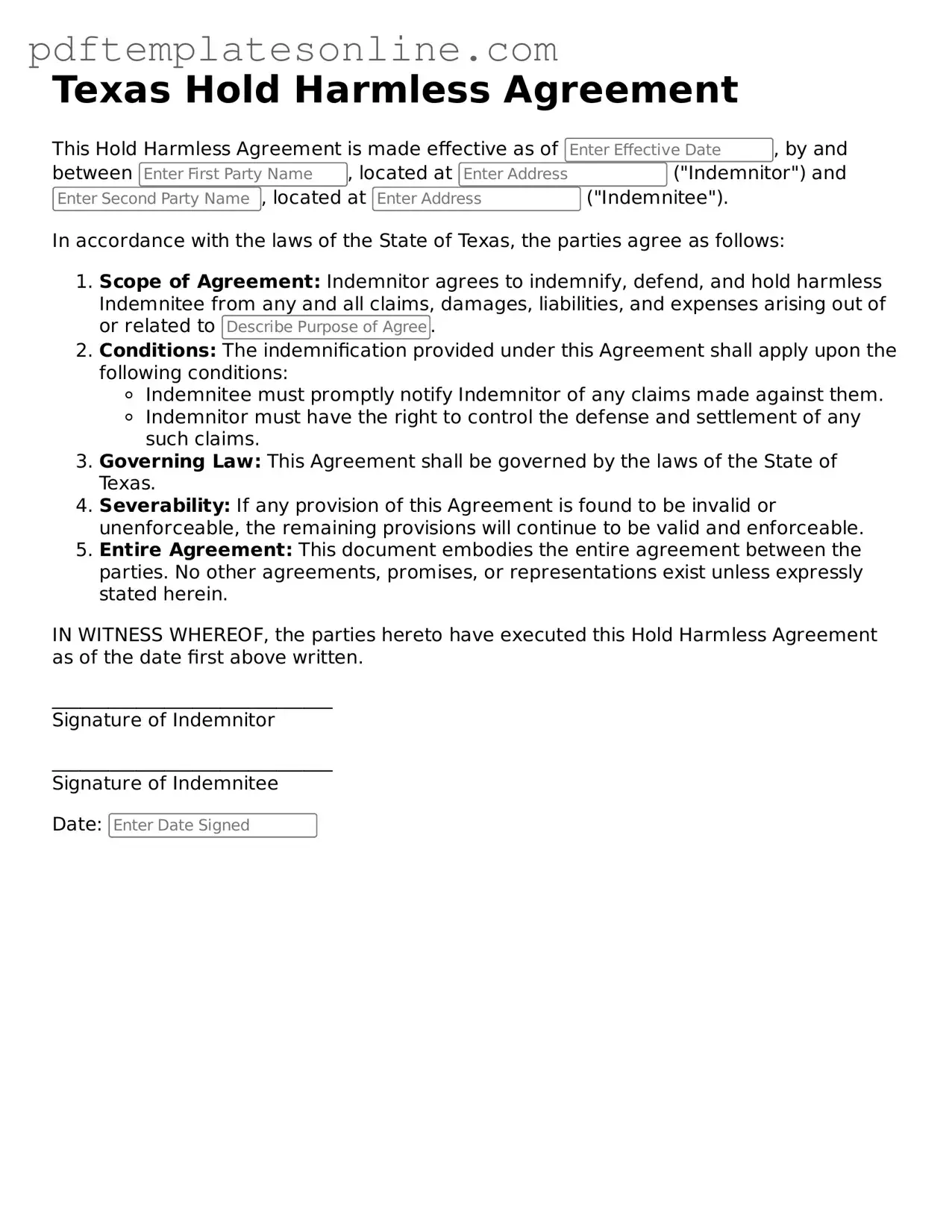Filling out a Texas Hold Harmless Agreement can be a straightforward task, but many people make common mistakes that can lead to confusion or even legal issues. Understanding these pitfalls can help ensure that the agreement serves its intended purpose effectively.
One frequent mistake is failing to include all relevant parties in the agreement. It’s essential to clearly identify everyone involved, including individuals and organizations. Omitting a party can create gaps in liability coverage, leaving some individuals exposed to potential claims.
Another common error is neglecting to specify the scope of the agreement. A vague description of the activities or situations covered can lead to misunderstandings later. It’s crucial to outline exactly what risks are being assumed and under what circumstances, ensuring clarity for all parties involved.
People often overlook the importance of dates. Leaving out the effective date or not specifying the duration of the agreement can create ambiguity. A well-defined timeframe is essential to avoid disputes about when the agreement is in effect.
Additionally, many individuals fail to read the agreement thoroughly before signing. Skimming through the document can lead to misunderstandings about the terms. Everyone involved should take the time to review the agreement carefully, ensuring they understand their rights and obligations.
Another mistake is using outdated or incorrect forms. Legal documents can change over time, and relying on an old template may not reflect current laws or practices. It’s advisable to use the most recent version of the Hold Harmless Agreement to ensure compliance.
Some people also forget to include a clause for dispute resolution. Not having a clear process for resolving disagreements can lead to lengthy and costly legal battles. Including a mediation or arbitration clause can provide a more efficient way to handle disputes if they arise.
Finally, individuals often neglect to consult with a legal professional. While it may seem unnecessary, seeking legal advice can help clarify any uncertainties and ensure that the agreement is properly structured. A lawyer can provide insights that protect all parties involved.
Avoiding these common mistakes can help ensure that a Texas Hold Harmless Agreement is effective and serves its purpose. Taking the time to complete the form correctly can save individuals from potential complications down the line.
